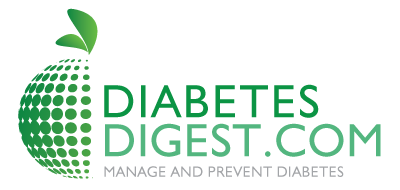Home Healthcare
You can get all the medical equipment and supplies you need, like lift chairs, rolling walkers and scooters, at many larger pharmacies. If an item is not in stock, speak to the pharmacist about special ordering what you need.
Improving your mobility
- A mobility aid like a cane or walker can help if you have difficulty walking, climbing stairs or standing up. A cane or walker is also helpful if you have weaker muscles than usual, have had a leg injury or surgery, have trouble seeing, or have a history of falling or loss of balance. Talk with your healthcare provider about any mobility changes you are experiencing.
- Keep active. Thirty minutes of activity a day can help maintain and improve balance and mobility. It increases strength and flexibility and decreases joint stiffness, which helps lower the chances of falling. Exercises targeting legs increase strength, which help support balance during movement. Talk to your healthcare provider before starting an exercise program.
Using canes
Talk to your healthcare provider to help you decide if you need a cane. If you do need one, he or she can fit a cane to your height and physical needs and show you how to use it. Canes have different handle grips that may make it easier to hold and bases with one or four tips, which help with balance or support. A couch cane helps you stand up after being seated, but it does not move.
Here are some tips for walking with a cane on different surfaces.
- Walking: Place the cane in the hand opposite the weaker leg, so if your left leg hurts, put the cane in your right hand. Move the cane and your weaker leg a short distance in front of you and then move your stronger leg. The cane and weaker leg should touch the ground at the same time.
- Going upstairs: Grip the railing with the hand opposite the weaker leg. Next, move the stronger leg up to the next step and then move the weaker leg to the same step, followed by the cane.
- Going downstairs: Grip the railing with the hand on the side of the weaker leg. Next, move your cane down to the next step and then move the weaker leg to the same step, followed by the stronger leg.
How to choose the proper cane length
Stand up straight with your shoes on and arms at your sides. The top of the cane should reach the crease on the underside of your wrist. If the cane is a good fit, your elbow will be flexed from 15-20 degrees when you hold the cane while standing.
How to choose a walker
Using a walker gives you additional stability when you walk. A walker can support a weak lower body, which can happen because of certain health conditions or surgeries like hip or knee replacements. A walker also helps reduce stress on the hips and legs and allows the joints to heal without additional pressure from the body’s weight.
Your healthcare professional can help choose a walker that fits your height and physical needs. Walkers come without wheels, or with just two wheels. Two-wheeled walkers are used by people with a weaker upper body, so that they can avoid picking up the walker. When using walkers on flat surfaces, it is important to keep the walker’s legs even with the ground while taking small steps.
The difference between a walker and a rollator
If you need more support, but still have some leg strength, a rollator might be right for you. Rollators are like walkers, but they have three or four wheels. Three-wheel rollators are lighter, smaller and easier to move around. Four-wheel rollators are larger and more stable. Some rollators have seats for resting, hand-brakes for stopping, or a basket for storage. They also fold for easy transport and storage.
Wheelchairs and transport chairs
People use wheelchairs and transport chairs for mobility when recovering from surgery or injury. The person sitting in a wheelchair can move the chair, but a person sitting in a transport chair needs a caregiver to move the chair. Both chairs help people who have lower body weakness, spinal cord injuries or conditions that may make walking and standing difficult. They are also for people who do not have the ability to move their lower or upper body.
There are many kinds of manual wheelchairs or transport chairs available. Some are light and can be folded, and others are heavier and don’t fold. If your upper body is weak, your healthcare professional may suggest a power chair, which moves on its own by battery power. Power chairs range in weight, size and battery life, and some can fold for transport. Consider purchasing a cushion if you sit for extended periods of time.
How to choose a power scooter
Power scooters give extra support for people who use a cane or walker inside and need more mobility outside. In order to remain stable when using a scooter, it’s necessary to have some upper body strength and be able to work the controls with your hands. Some scooters have seats that turn so you can easily get in and out of them.
- A three-wheel power scooter is lighter, more portable and best on even ground.
- A four-wheel power scooter is heavier, more stable and better for uneven surfaces.
How to choose a lift chair
Lift chairs are cushioned chairs that can raise or lower to help you stand up and sit down, and they are available in different styles and sizes. Some questions to ask when choosing one include:
- What chair size (width and depth) will work for you and your space?
- How much weight can the chair hold?
- How long will you sit in the chair?
- Will you sleep in the chair?
- Do you want the chair to recline, sit and lift?
- Do you want chair controls on the left or right side?
- What kind of fabric do you like?
- Do you want a lift chair that can plug into an electrical outlet with a battery backup system?
Bathroom safety
Certain health conditions can make it difficult to get around, both inside and outside of the bathroom. Staying safe in the bathroom is important for people with limited vision, joint pain, muscle weakness or other physical problems. If you have any these problems, it is recommended to make some changes in your bathroom. Here are several ways to improve your bathroom safety:
- Wear nonslip shoes to prevent falls and make it safer to walk in your bathroom.
- Put in extra lighting, such as night-lights, on the way from the bed to the bathroom, and in the bathroom, so that you can see better. Use a lighted light switch cover so that you can see it clearly.
- Change the water heater temperature setting to a maximum of 120 degrees to reduce your risk for burns.
- Put in a single lever faucet on the sink for better water temperature control.
- Pad your faucets with faucet cushions to protect your head in case of a fall.
- Carry a cordless telephone or cellphone with you into the bathroom, or wear an emergency response device that you can easily reach in case of a fall. Keep them away from and out of the water.
- Unplug electrical appliances that are not being used to avoid the risk of electrical accidents. Keep electrical wires far from water sources.
- Do not store your prescription, over-the-counter medicines, vitamins and supplements in the bathroom. High humidity and heat may decrease their ability to work.
Dry shampoo
Many people use dry shampoo to keep their hair clean. It is a dry substance, made of aerosol propellants, absorbent materials, solvents, conditioners and fragrances, that can be used to clean hair without using water. Dry shampoo absorbs oil from the scalp and hair, and can be used once in a while instead of a hair rinse. This shampoo comes in either a powder or liquid form, or an aerosol spray. If you are busy and don’t have the time it takes to prepare for and take a shower, dry shampoo is a good backup. It will save you time and energy, and is hassle-free.
Disposable gloves
There are regular disposable gloves available at any pharmacy. They come in different sizes, so make sure you choose the right size for your hand. Gloves that are too big make it hard to handle objects and allow germs to get inside more easily than more fitted gloves. Gloves that are too small may rip.
For some care procedures, a caregiver will need to use sterile gloves. Sterile means they are germ-free. These gloves also come in different sizes, so be sure to know your size.
Daily living aids
Everyday activities like cooking meals or getting dressed can be hard to do if you have pain, stiffness, or certain diseases and conditions that can make moving more difficult. Finding ways to continue doing them as safely as possible is important for independent living.
Products for hand problems
Many diseases and conditions make it harder for your hands to move, including arthritis, Parkinson’s disease, multiple sclerosis and carpal tunnel syndrome. But there are daily living aids that can help you continue your daily activities. Products that make it easier to work with your hands include jar openers, zipper pulls and buttonhooks, which pull buttons through buttonholes. Also, ask your pharmacist about easy-to-open medicine bottle caps, but be sure to keep those products out of children’s reach as they are not childproof.
Products for arm and shoulder problems
Bathing and dressing can be hard to do if you cannot move your arms well or reach very far. Many daily living aids can help, such as dressing sticks that make it easier to put clothes and jackets on and take them off, especially if you need to bring your arms up or behind your body. If you find that you need things that are out of reach, you can use a reacher, which can help you grasp things without having to climb up a step stool or ladder. Long-handle bath sponges can also help if you have trouble moving your shoulders or arms.
What to do about hearing loss
If you cannot hear well, then it may not be enjoyable to talk on the telephone or watch television. Amplifiers can help you hear better on the phone or when watching television by increasing the volume. Headphones can also help you hear the television better. Headphones can have wires, or may be wireless. Wireless headphones also help you keep cords off the floor to help prevent falls.
If you experience a loss of hearing and are not sure about what daily living aids are right for you, ask your healthcare provider about getting your hearing tested to see if you would benefit from a hearing aid.
Products for back or knee pain
If you have trouble bending, sock aids may make it easier to pull on socks. Elastic shoelaces and extra-long handle shoehorns help when putting on shoes because you do not have to reach as far.
Vein problems
Veins move blood throughout the legs and the rest of the body, and back to the heart. Muscles around veins and pressure from vein walls help to pump blood. Vein problems, like swelling (edema) and deteriorated veins and valves, can lead to venous diseases, which are veins that cannot move blood very well. Damaged or weakened vein walls or stretched or injured vessels cause venous diseases. When this happens, the veins cannot move blood back to the heart. When blood doesn’t move forward efficiently, it can cause swelling in the legs. The following venous conditions affect the body’s ability to return blood to the heart:
- Varicose veins are twisted and swollen veins just under the surface of the skin. When too much blood collects in the veins, it causes them to become enlarged and more visible than usual. Symptoms include leg swelling, an achy or heavy feeling in your legs and rashes.
- Venous insufficiency is a condition in which it is difficult for the veins to send blood from the legs back to the heart. Symptoms include leg or ankle swelling, varicose veins and pain that gets worse when standing.
- Deep vein thrombosis is a blood clot in a vein deep in the body. Clots can form in injured veins, which may swell. If they move to the lungs, clots may cause a pulmonary embolism, which can be life-threatening. Symptoms include swelling and leg pain, warmth or redness in the affected leg, however many people have no symptoms.
- Superficial venous thrombosis a blood clot in a vein close to the skin surface. Symptoms include redness, swelling around veins and pain.
Treatment for venous diseases
Medicines or surgery may help remove blood clots and prevent them from returning. Discuss treatment options with your healthcare provider.
Preventing venous diseases
Exercising helps muscles stimulate veins, helping to push blood back to the heart. Elevating the legs above the heart and using elastic compression stockings can help keep blood from collecting in the lower legs. Both help prevent blood from pooling. Losing weight helps reduce pressure on the legs. Avoid standing and sitting in the same position and crossing your legs because it makes veins work harder to move blood forward. Eat fewer salty foods, because too much salt can cause leg swelling. And avoid wearing high-heeled shoes because they keep calf muscles flexed, which can affect blood flow.
Edema facts
Edema is swelling in the body caused by too much fluid. Extra fluid is caused by sitting or standing in one place for too long, eating salty foods, taking certain medicines, and medical conditions like congestive heart failure. In addition to swelling, symptoms include stretched out and shiny-looking skin.
Treatments for edema
Treatments include lifestyle changes, like avoiding salty foods, elevating the legs, and being more active. Your doctor may prescribe medicine to treat the cause of your edema, or compression stockings to help reduce swelling.
Compression therapy
Compression therapy involves wearing compression stockings that add pressure to vein walls and muscles. This pressure helps stop blood from collecting in the lower legs. Gradient therapy is a form of compression therapy, which may be used to prevent leg swelling. Gradient therapy stockings put greater pressure on the ankle with decreasing pressure moving up the leg.
Types of compression stockings
There are three main types of compression stockings. Each offers different levels of pressure:
- Support pantyhose apply the least amount of pressure because there is all-over leg compression.
- Over-the-counter gradient compression hose apply more pressure.
- Prescription-strength gradient compression hose apply the most pressure. Your healthcare provider or a specially trained professional can help you find the prescription-strength gradient compression hose that meet your medical needs. Wear your hose every day and put them on before getting out of bed to help reduce swelling.
Prevent falls in your home
These simple changes can increase home safety:
- Install bright lights in hallways, stairs and bathrooms. Place lights at the top and bottom of stairs with light switches in both places.
- Install handrails on both sides of stairs to increase stability.
- Secure carpets to floors and stairs, or remove them. Put nonslip strips on bare floors and stairs.
- Avoid climbing ladders or getting in awkward positions that can increase your risk of falling.
- Clear away any cords, furniture, papers or pet bowls in hallways or pathways throughout your home.
- Install grab bars inside bathtubs and showers and around toilets for better balance, and use bars that can handle the weight of the person using them. Do not use towel bars for support because they are not built for this use.
- Carry a cordless phone or cellphone with you into the bathroom, or wear an emergency response device that you can reach in case of a fall. Keep them away from and out of water.





